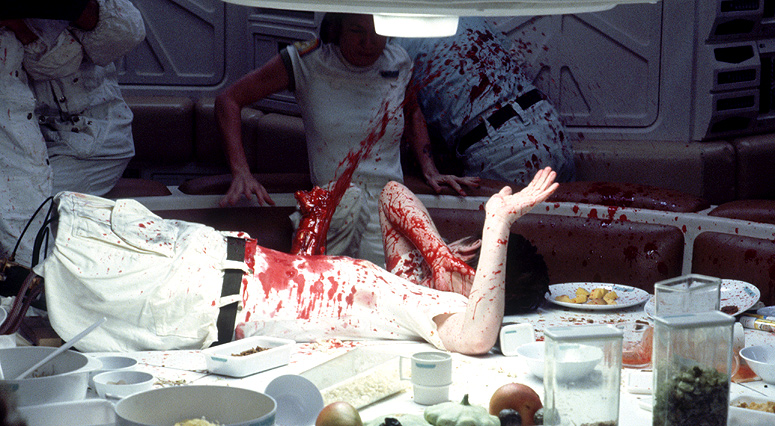Ha. Nope.
 |
| The scene that haunted my childhood |
| This is H.R. Giger, the guy who made the alien costume. I don't want to talk about him, just point out how creepy he is. |
The Alien itself is - ok, here's one of the only places I'll give in to the theory; his head looks like a dick - iconic. Scott crafted the film so that you would never see the full alien until the very end of the movie. Instead, he reveals it in different stages (egg, facehugger, coming out of John Hurt's chest) before slowly showing different bits and pieces of the fully grown thing. There were no special effects involved in the making of the alien, apart from the obvious practical effects, and there was actually an actor inside the costume of the full-grown adult. Now that I mention it, there was only ever one shot done on a bluescreen; the rest of the film - including many of the space scenes, were done with scaled-down models of the spaceships "flying' over a purely black background. Stars were later added in with double exposure.
All of the cinematography and effects aside, however, the thing that stood out the most to me was the combination of the dialogue and the lack thereof. I had never realized how profoundly quiet the whole movie really was. There's practically no dialogue at all for the last 20-30 minutes of the film, but unless you're really stopping to think about it (as I was. Thanks Arturo, you've ruined movies for me) it's not something that would ever stand out to you since so much else is going on. According to somewhere in this Wikipedia article, Scott encouraged his actors to improvise their lines, and he liked their improvisations so much that he decided to keep them in the film. As a result, the film feels much more gritty and realistic, without any unnecessary rants or monologuing that this type of movie might fall victim to. For a science-fiction/horror movie, I think it's the perfect balance of giving exposition through dialogue and simultaneously telling a very visual story.
No comments:
Post a Comment